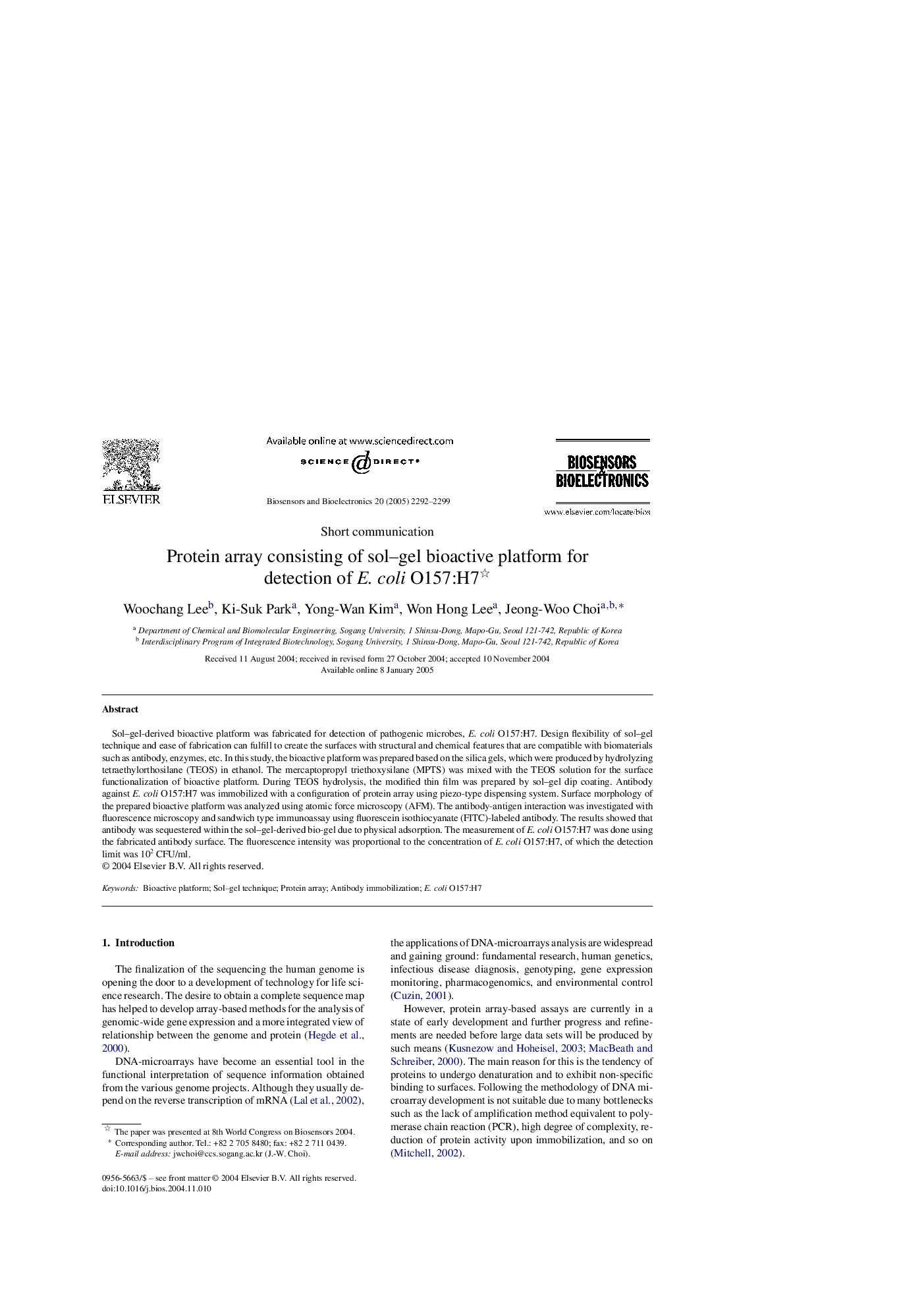| Article ID | Journal | Published Year | Pages | File Type |
|---|---|---|---|---|
| 870257 | Biosensors and Bioelectronics | 2005 | 8 Pages |
Sol–gel-derived bioactive platform was fabricated for detection of pathogenic microbes, E. coli O157:H7. Design flexibility of sol–gel technique and ease of fabrication can fulfill to create the surfaces with structural and chemical features that are compatible with biomaterials such as antibody, enzymes, etc. In this study, the bioactive platform was prepared based on the silica gels, which were produced by hydrolyzing tetraethylorthosilane (TEOS) in ethanol. The mercaptopropyl triethoxysilane (MPTS) was mixed with the TEOS solution for the surface functionalization of bioactive platform. During TEOS hydrolysis, the modified thin film was prepared by sol–gel dip coating. Antibody against E. coli O157:H7 was immobilized with a configuration of protein array using piezo-type dispensing system. Surface morphology of the prepared bioactive platform was analyzed using atomic force microscopy (AFM). The antibody-antigen interaction was investigated with fluorescence microscopy and sandwich type immunoassay using fluorescein isothiocyanate (FITC)-labeled antibody. The results showed that antibody was sequestered within the sol–gel-derived bio-gel due to physical adsorption. The measurement of E. coli O157:H7 was done using the fabricated antibody surface. The fluorescence intensity was proportional to the concentration of E. coli O157:H7, of which the detection limit was 102 CFU/ml.
